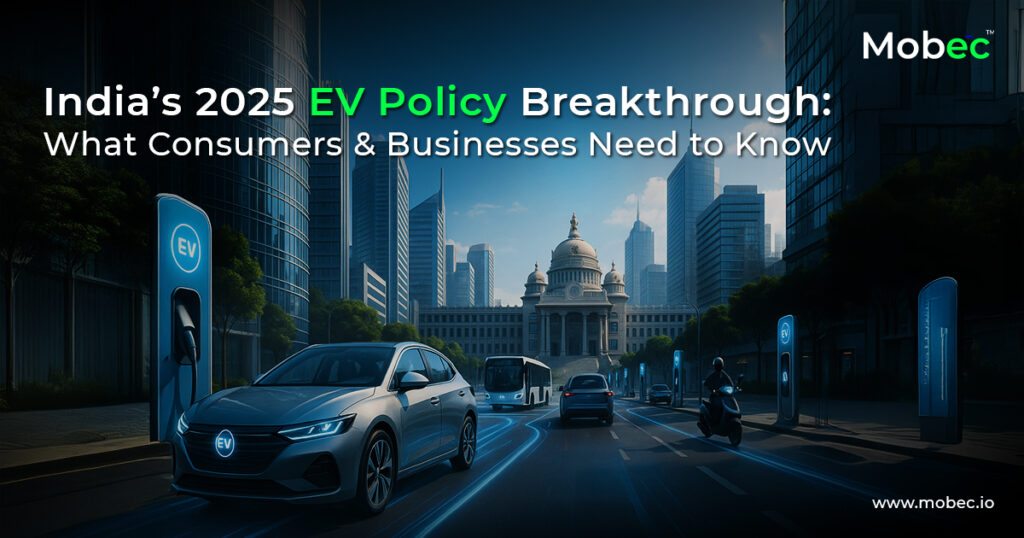Over the next five years, the global lithium battery market is set for rapid expansion, and sustainability will play a bigger role than ever. The world is charging toward a cleaner future—and lithium-ion (Li-ion) batteries are powering the journey. From electric vehicles to renewable energy storage, these batteries are at the center of a global transformation.
Let’s break down what lies ahead—and how Mobec is contributing through lithium battery recycling.

The lithium-ion battery market is accelerating rapidly. According to industry insights:
- The market was valued at around $48.8 billion in 2022 and is projected to reach nearly $184 billion by 2030.
- Between 2024 and 2030, the market is expected to grow at a CAGR (Compound Annual Growth Rate) of 18–20%.
- In terms of battery capacity, demand is expected to jump from around 700 GWh in 2022 to approximately 4.7 TWh by 2030.
This surge is driven largely by the rise of electric vehicles (EVs), renewable energy storage needs, and growing use in portable electronics.

Lithium-ion batteries are making sustainable transport and storage more affordable, accessible and efficient than ever.
1) Electric Mobility Boom
Global EV sales are rising by over 25% every year, powered by lithium batteries. Their efficiency and long lifespan make them ideal for transportation, and as more countries set EV adoption targets, demand for these affordable, accessible batteries will only grow.
2) Clean Energy Storage
Li‑ion batteries play a pivotal role in storing solar and wind energy, making clean power more reliable and accessible. By efficiently balancing supply and demand, they reduce reliance on fossil fuels and support a more sustainable energy future.
3) Falling Battery Prices
The average cost of lithium battery packs dropped nearly 20% in 2024, making electric vehicles and energy storage more affordable and accessible. As prices continue to fall, lithium batteries are becoming a key driver for cleaner, cost‑effective, and sustainable energy solutions.
What’s Next? → Innovation in Circular Economy
While lithium‑ion batteries still dominate nearly 99% of the market today, next‑generation alternatives — like solid‑state and sodium‑ion — are quickly gaining momentum. According to Globenewswire, this segment is projected to grow from $1.5 billion in 2024 to $5.3 billion by 2029, representing a CAGR of over 28%.
But with rapid growth comes a pressing responsibility: managing the end‑of‑life phase of these batteries. As electric vehicles and energy storage systems continue to expand, so too will the volume of used batteries. This is where battery recycling takes center stage — not just as a solution for waste, but as a catalyst for a sustainable, circular economy.

At Mobec, we believe that the future of energy must be both smart and sustainable. That’s why we are actively involved in LiB recycling and Energy dispensing, working to:
- Recycling lithium batteries to recover over 95% of vital materials — lithium, cobalt, and nickel — for a cleaner, greener future
- Reduce the need for fresh mining and raw material dependency
- Cut down on carbon emissions
- Support the global shift to a circular economy
We envision to grow alongside global lithium battery market growth, but also keep the sustainability factor as our primary goal.

- China Dominates the Market: Currently, China leads global lithium‑ion battery production, accounting for roughly 73% of total manufacturing capacity. Its established supply chains and massive investments have made it the powerhouse of the industry.
- Europe and North America are expanding manufacturing to improve supply chain resilience.To reduce reliance on imports and build stronger supply chains, new manufacturing plants and collaborations are emerging — all aimed at supporting local EV production and clean energy storage.
- India is emerging as a major player in the global battery market. Its capacity is set to grow from 18 GWh in 2023 to 145 GWh by 2030, a huge leap that supports the country’s ambitious EV and clean energy goals. Government incentives and private investments are driving this rapid growth, making India a key force in the shift to electric mobility.
- More than 120 new battery factories are projected to be operational worldwide by 2030. These facilities will not only meet rising demand but also drive innovation in battery technology, sustainability, and recycling.
Key Challenges and Solutions
| Challenge | Solution |
| Supply chain dependency | Invest in regional recycling and production |
| Lithium price fluctuations | More affordable batteries for users |
| Environmental impact of mining | Focus on battery recycling & reuse |
Challenges will always be part of the journey — especially when taking bold steps towards a cleaner, electric future. But every obstacle is also an opportunity to innovate and do better. Mobec believes what truly matters is focusing on building long‑term solutions, rather than being held back by the hurdles along the way.

- Acc. to grandviewresearch report, the global lithium‑ion battery market is projected to grow from approximately US $54.4 billion in 2023 to around US $182.5 billion by 2030, reflecting a CAGR of ~20.3%.
- Lithium Battery capacity demand will triple
- New chemistries will rise but Li-ion will remain dominant
- Lithium battery recycling will grow at over 15% CAGR, helping close the loop
- With a focus on sustainability, Mobec is well positioned to lead this transition
Conclusion: Growth With Responsibility
From smartphones to electric cars, lithium‑ion batteries are reshaping the way we live, move, and power our world. They’ve become the heartbeat of modern life, making clean transportation, seamless connectivity, and sustainable energy a reality. But true progress means thinking beyond the charge — it’s about looking at the full lifecycle of every battery we create.
At Mobec, we’re reimagining that lifecycle. We’re not just powering today’s innovations — we’re engineering a future where lithium‑ion batteries can be recovered, recycled, and returned to the energy ecosystem. Our approach goes beyond keeping devices charged; it’s about keeping the planet in balance, making sure every watt of energy we use finds its way back into the cycle.
Because a sustainable future isn’t just about powering up — it’s about powering wisely, consciously, and responsibly.






